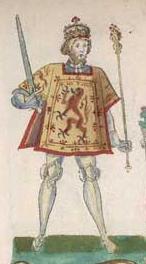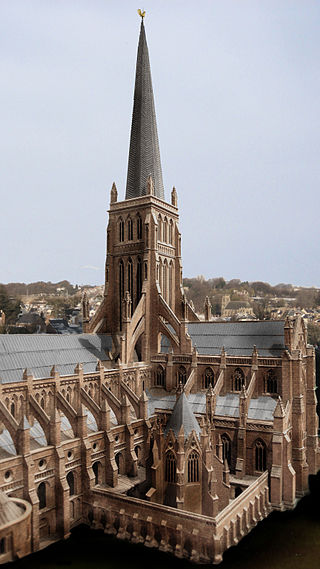
Clan Cranstoun is a family of the Scottish Lowlands.
Holders of the office of Lord Chamberlain of Scotland are known from about 1124. It was ranked by King Malcolm as the third great Officer of State, called Camerarius Domini Regis, and had a salary of £200 per annum allotted to him. He anciently collected the revenues of the Crown, at least before Scotland had a Treasurer, of which office there is no vestige until the restoration of King James I when he disbursed the money necessary for the maintenance of the King's Household.
The Archdeacon of Lothian was the head of the Archdeaconry of Lothian, a sub-division of the Diocese of St Andrews. The position was one of the most important positions within the medieval Scottish church; because of his area's large population and high number of parish churches, the Archdeacon of Lothian may have exercised more power than many Scottish bishops before the decline in archdiaconal powers after the 13th century.
The Archdeacon of Dunkeld was the only archdeacon in the Diocese of Dunkeld, acting as a deputy of the Bishop of Dunkeld. The following is a list of archdeacons:
The Archdeacon of Moray was the only archdeacon in the Diocese of Moray, acting as a deputy of the Bishop of Moray. The archdeacon held the parish churches of Forres and Edinkillie as a prebends since 1207. The following is a list of known historical archdeacons:
This is a list of Sheriffs of Norfolk and Suffolk. The Sheriff is the oldest secular office under the Crown and is appointed annually by the Crown. He was originally the principal law enforcement officer in the county and presided at the Assizes and other important county meetings. After 1576 there was a separate Sheriff of Norfolk and Sheriff of Suffolk.
The city of Danzig (Gdańsk) from 1308 to 1945 had various offices, like mayor, councillor, burgrave. Also, separate city parts had representants of their own for some time.
The Auditor of the Receipt of the Exchequer was an office in the English Exchequer.

St. Giles' Church is the parish church in Ickenham, within the London Borough of Hillingdon in England.

The Treaty of York (1464) was made between England and Scotland on 1 June 1464 at York and was intended to establish 15 years of peace. Previously Scotland had supported the defeated House of Lancaster in the English civil War of the Roses.

The Dean and Chapter of St Paul's Cathedral was the titular corporate body of St Paul's Cathedral in London up to the end of the twentieth century. It consisted of the dean and the canons, priests attached to the cathedral who were known as "prebendaries" because of the source of their income. The Dean and Chapter was made up of a large number of priests who would meet "in chapter", but such meetings were infrequent and the actual governance was done by the Administrative Chapter headed by the dean, made up of several senior "residentiary canons", who were also known as the "Dean and Canons of St Paul’s" or simply "The Chapter".
The Sheriff of the Lothians and Peebles was historically the office responsible for enforcing law and order and bringing criminals to justice in The Lothians and Peebles, Scotland. Prior to 1748 most sheriffdoms were held on a hereditary basis. From that date, following the Jacobite uprising of 1745, the hereditary sheriffs were replaced by salaried sheriff-deputes, qualified advocates who were members of the Scottish Bar.



